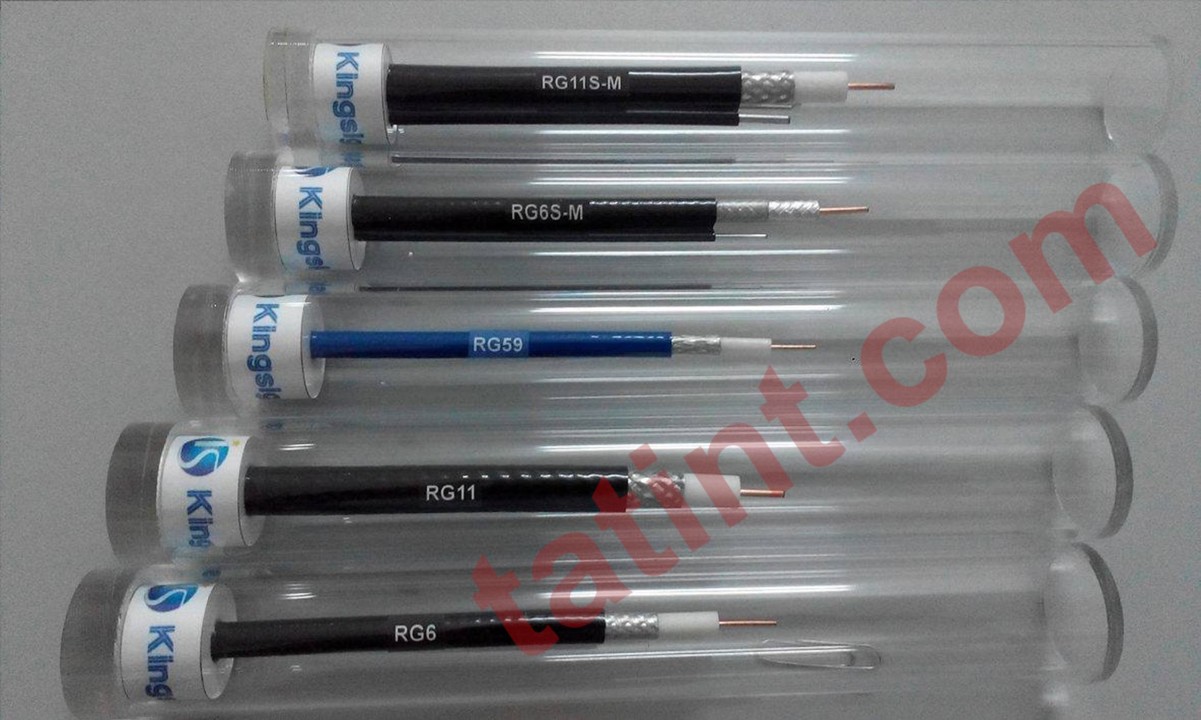SOLVED! new to dish
- Thread starter myby64
- Start date
- Latest activity Latest activity:
- Replies 11
- Views 3K
You are using an out of date browser. It may not display this or other websites correctly.
You should upgrade or use an alternative browser.
You should upgrade or use an alternative browser.
The problem has been solved!
Don't you want to specify "swept to 3GHz" RG6?
No,that's what I thought. Read alot on RG11 they say its alot better for hd maybe they switched , thanks
PLEASE LOG IN TO GET RID OF THESE ADS!
RG11 is used for very long coax runs because it has more copper. It is seldom used in residential installations. Many years ago cable TV used RG59. With the need for higher bandwidth the standard, today, is RG6 except for very long runs.No,that's what I thought. Read alot on RG11 they say its alot better for hd maybe they switched , thanks

The differences between RG6, RG11 and RG59
RG Coaxial Cables are widely used in Telecom projects as well as daily civil works. RG Coaxial Cables include many types in which the most popular type is RG6, RG11 and RG9 Coaxial Cables.
 www.linkedin.com
www.linkedin.com
I thought it was because of lower attenuation, making it useful for longer runs. It probably has more copper as well, but at these frequencies, I don't think the signal penetrates very far into the material. Don't some coaxes take advantage of this by using copper-clad wire?RG11 is used for very long coax runs because it has more copper.
We use solid copper wire for Hughesnet/Viasat installs and runs between 100 and 200 feet because of the way it handles voltage. RG 11 is used for extraordinary long runs. In our case, the customer is responsible for supplying the cable, connectors, terminators, etc. I've only seen one job where the run was about 300' from the Dish to the house and while dBM's were higher, the system worked perfectly wellI thought it was because of lower attenuation, making it useful for longer runs. It probably has more copper as well, but at these frequencies, I don't think the signal penetrates very far into the material. Don't some coaxes take advantage of this by using copper-clad wire?
Aha; that makes sense. The lower the frequency, the more the signal penetrates. For DC supplies, of course the cross section of the copper is important to keep the resistance down.We use solid copper wire for Hughesnet/Viasat installs and runs between 100 and 200 feet because of the way it handles voltage.
Ambiguous. Did the customer supply RG11, or did you supply RG6? 300' would be spectacular performance for RG6.I've only seen one job where the run was about 300' from the Dish to the house and while dBM's were higher, the system worked perfectly well
PLEASE LOG IN TO GET RID OF THESE ADS!
I've tested a Dish H2 with 400' of RG6. It worked ok, but the signal levels were definitely lower than with 200'. The only RG11 install I've done was 490' to an EA 1000.2. I used direct burial RG11 for that one with it running under a rural road. Signal levels were in the 45-55 range.
No he supplied RG11 and the hardware. The solo Node was at the Dish with a Tap at the house. My fault for not specifying RG11Aha; that makes sense. The lower the frequency, the more the signal penetrates. For DC supplies, of course the cross section of the copper is important to keep the resistance down.
Ambiguous. Did the customer supply RG11, or did you supply RG6? 300' would be spectacular performance for RG6.
Users Who Are Viewing This Thread (Total: 0, Members: 0, Guests: 0)
Who Read This Thread (Total Members: 148) Show all
- myby64
- getoffmydvr
- TheWeatherMan
- fsmith61
- marvodoc
- ashecnc
- CLASSICDIRECTV
- BarnRat
- cfkillers
- Beta Lemur
- dennispap
- tpribors
- jannah
- gdarwin
- Bossmas4325
- Mister B
- dsimmon9
- sklunk
- JD1003
- MikeD-C05
- RobMeyer1
- tanman
- vlogical1
- Sparky29
- bmetelsky
- jaredbo
- gasman882001
- John796
- tallfence
- worstman1
- srcronk
- yelraek
- Dell00iss
- ambrock
- Tvland1
- dke
- JR_Baas
- DISH Support
- dweber
- bnewt
- J_Smooth
- bobc469
- dhunter113
- BLC1962
- AkaDoubleG
- Poorsha
- ethanlerma
- JSheridan
- NYDutch
- renegade734
- brice52
- larryk
- njack11
- Tony S
- Tecnicoloco
- scottcorinna
- rcpandr
- metzmda
- Howard Simmons
- syphix
- jimgoe

